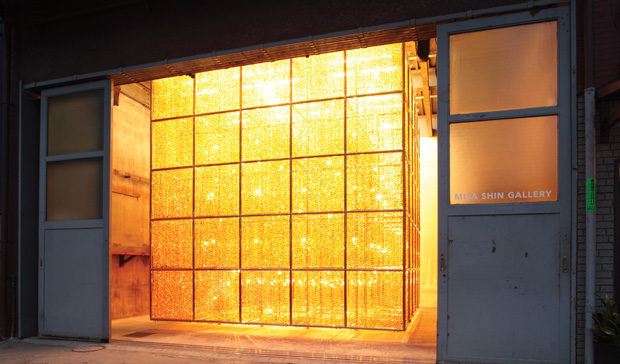When Misa Shin Gallery opened its doors for the very first time in November with a show by controversy-courting Chinese artist Ai Weiwei, the gallery announced that there would be a lecture by the man himself. It must have seemed a simple enough plan — but things are seldom simple in Ai Weiwei’s life.
In December, the government outrage in China over Liu Xiaobo’s Nobel Peace Prize resulted in the issuance of no-fly orders for Ai and hundreds of other intellectuals or activists that were suspected of planning to visit the ceremony in Norway. Ai says he had no intention of going.
“An advice for young people,” the artist wrote via Twitter, after being stopped by officials just prior to boarding a flight to South Korea, “don’t love a person or a country which you cannot freely choose to leave.”
The lecture at Misa Shin, at least of the time of this writing, is still up in the air.
Despite having been involved in the design of Beijing’s much vaunted Olympic Stadium, Ai’s fame doesn’t seem to be enough to keep him out of trouble with the authorities. His personal investigation into the hundreds of students that were killed or have gone missing in collapsed school buildings after the Szechuan earthquake led to a police beating so bad that he later required surgery to stop the bleeding in his brain. More recently, he was placed under house arrest to stop him from attending a protest party at his new Beijing studio, which was scheduled for demolition only shortly after being built, with little explanation as to why.
Much of Ai’s work is politically fueled — from the act of dropping and shattering a Han Dynasty urn, to using the wood from dismantled temples to build an enormous map of China. But walking into Misa Shin Gallery, viewers are faced with Ai’s more formal side. The show contains one large work: “Cube Light”, a kind of fusion of Ai’s works exploring his fascination with standard measurements and of his series of chandelier pieces. Here, the “chandelier” has been constructed from five 1-meter sections, each hung with amber glass beads and lit from within. The sculpture takes up almost the entire space of the tiny gallery, with only a narrow path circling around it.
“Cube Light” may be a big shiny object, but it also has its political side. After all, what is a chandelier but a show of opulence and power? And here, rather than lighting the room, the fixture completely occupies it. While the work was not made specifically for Misa Shin, it seems to fit the space as if it were. The gallery building was once a small steel foundry and retains the trappings of its industrial days. The sparkling bulk of “Cube Light” throws the building’s history into strong relief, seeming to strike a contrast with the gray interior even as it draws attention to the area’s gentrification.
Moreover, the sheer size of the sculpture gives it a kind of architectural irony; like Ai’s “Tea House” made of solid blocks of tea, “Cube Light” is a room-sized structure that cannot be entered. We can only peer at it from the outside — an idea which carries its own potential associations with Chinese politics, and power in general. With Ai still confined to China’s borders, the work seems to press closer to gallery walls than ever. (Owen Schaefer)
Exhibition: ”Ai Weiwei: Cube Light”
(till Jan. 29)
Venue: Misa Shin Gallery
(Shirokane-Takanawa Station)
Hours: 12 noon–7 pm (Closed Sun. & Mon.)
Admission: Free
More info: Visit www.misashin.com
or call (03) 6450-2334









